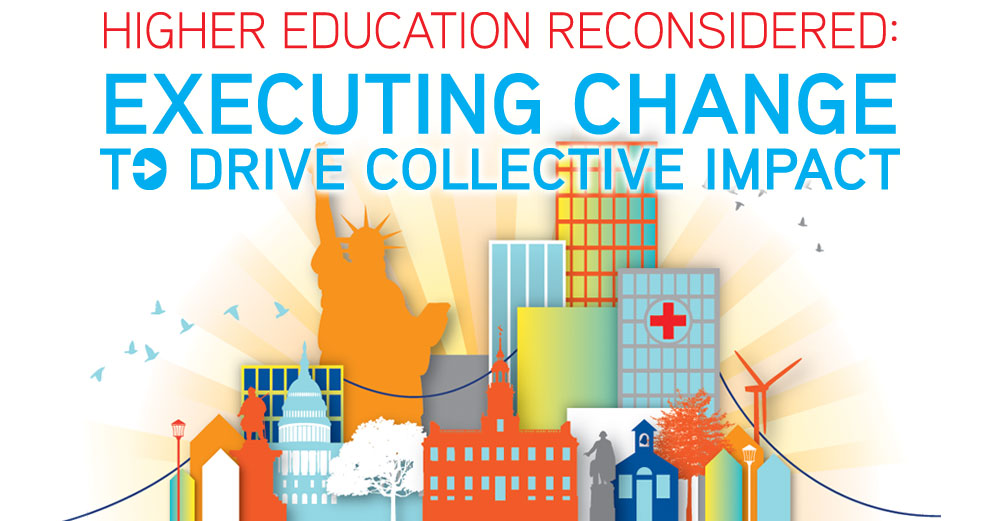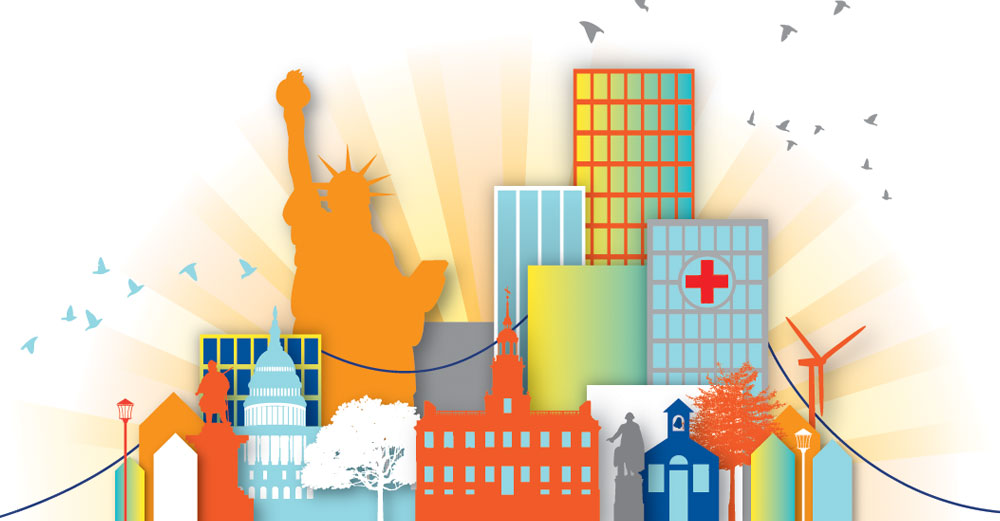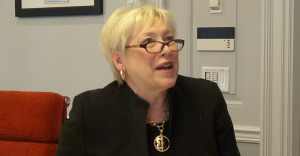 On October 29-30, The State University of New York is doing something that has never been done before.
On October 29-30, The State University of New York is doing something that has never been done before.
For our fourth annual Critical Issues in Higher Education conference, SUNY is diving deep into the hot topic of collective impact—gathering several of today’s foremost thinkers, doers, and change leaders from a variety of fields so that we may better learn from them how to drive meaningful change in our field, higher education, in a changing world.
What is collective impact?
It sounds so simple, and perhaps, in theory, it is, but in practice collective impact is complex. At its heart, it’s teamwork, but it’s also so much more than that.
In their popular 2011 article published in the Stanford Social Innovation Review, John Kania and Mark Kramer define collective impact as, “The commitment of a group of important actors from different sectors to a common agenda for solving specific social problems.”[i] It takes an admission on the part of stakeholders from throughout the community—from government, business, philanthropy, the social sector, education—that our most challenging social issues are shared social issues. That as a society we rise and fall together, and because of that we have the shared responsibility to learn and employ new ways to lift everyone up.
To do this kind of work—to clearly identify and articulate the challenge at hand; to assemble the right players at the table; to create and continually work toward a common agenda; to establish a real, shared sense of responsibility; to collect and use data to make the best decisions about how to move forward; to keep the stakeholders coming back to the table in the face of conflict, frustration, and other commitments—all this takes tremendous discipline, patience, trust building, and also a mindset shift among those participating in the work. This doesn’t happen overnight. It’s slow, hard work. But from what we’ve seen so far, it also appears to be the most promising way forward in solving some of our society’s most daunting problems—health care, environmental issues, homelessness—and in SUNY’s case, improving education outcomes, from kindergarten through college.
SUNY as a change leader.
SUNY’s goal is to drive and make a powerful collective impact on education outcomes in New York State—to improve college access, completion, and success after graduation. To do that, we have committed to being a catalyst for change and drivers of collective impact.
Globally, we are facing a shortage of high- and medium-skilled workers and a surplus of low-skilled workers, and the same goes for New York State. It’s SUNY’s responsibility to ensure that New Yorkers are prepared to take on today’s jobs, fueling our state’s economy and supporting a healthy, high quality of life.
Improving college readiness, delivering high-quality academic programs through state-of-the-art instruction, ensuring more students enroll in and complete college, and optimizing the use of scarce resources are all goals that SUNY and other higher education institutions have voiced as their biggest priorities. We stand united in the quest to expand access, ensure completion, and guarantee success, and yet we struggle with how to get ourselves there. How can our large and complicated organizations transform themselves into nimble, responsive institutions? How do we realign ourselves around outcomes, broaden our accountability, and work toward achieving collective impact outside existing silos? How do we ensure all students, from cradle to career, have the supports they need, both in and out of school, to succeed in life?
The purpose of this year’s conference is to explore these concepts and questions. Understanding large-scale change in other sectors, such as healthcare, business, and the social sector, can help inform us of what collective impact looks like and how to get there. A deeper look at the mechanics of change enables us to build the habits of mind to examine our actions through the lens of continuous improvement.
To begin to change so we can collectively meet these needs, we need leaders who understand the science of change, systems that are change-oriented and more adaptive, a culture of data-driven decision making across entities, and a renewed commitment to working together across sectors to scale up change. By improving our ability to adapt, we improve our ability to impact.




